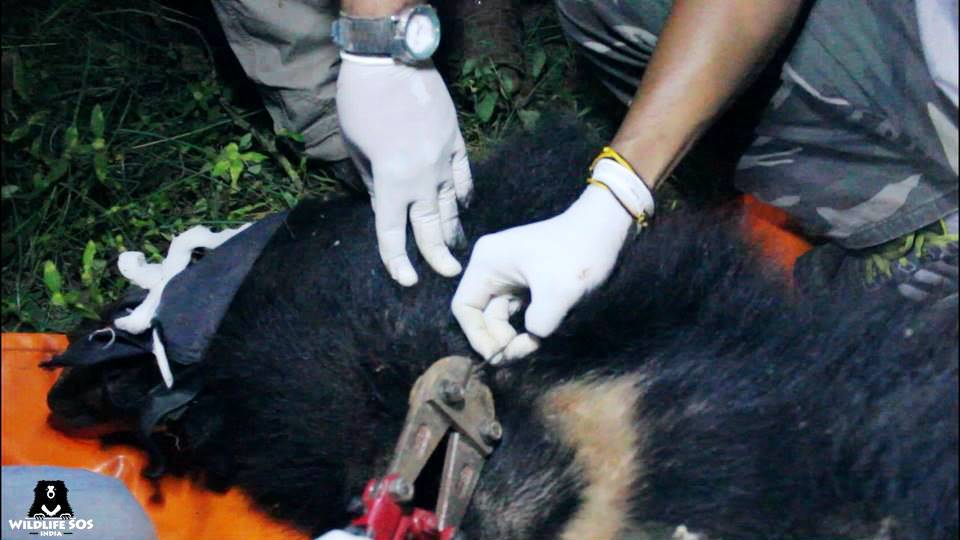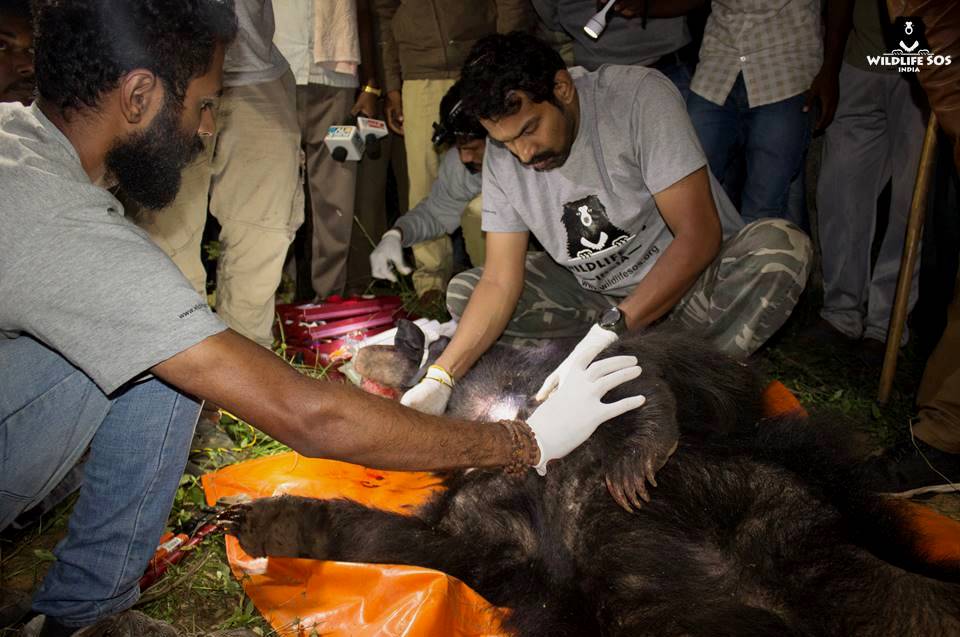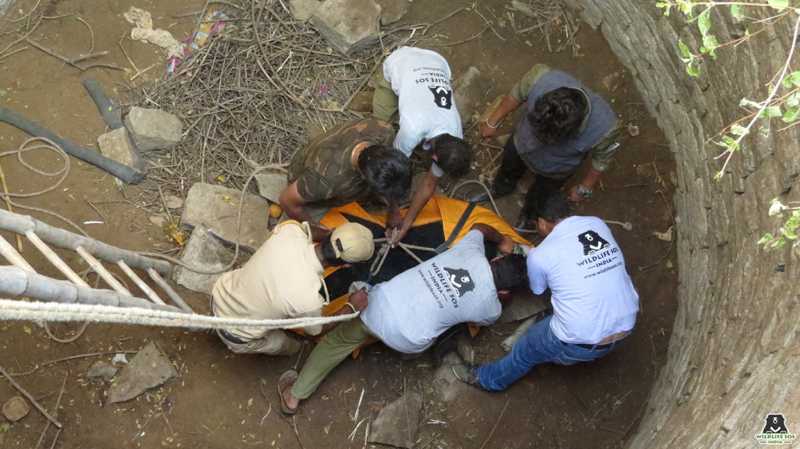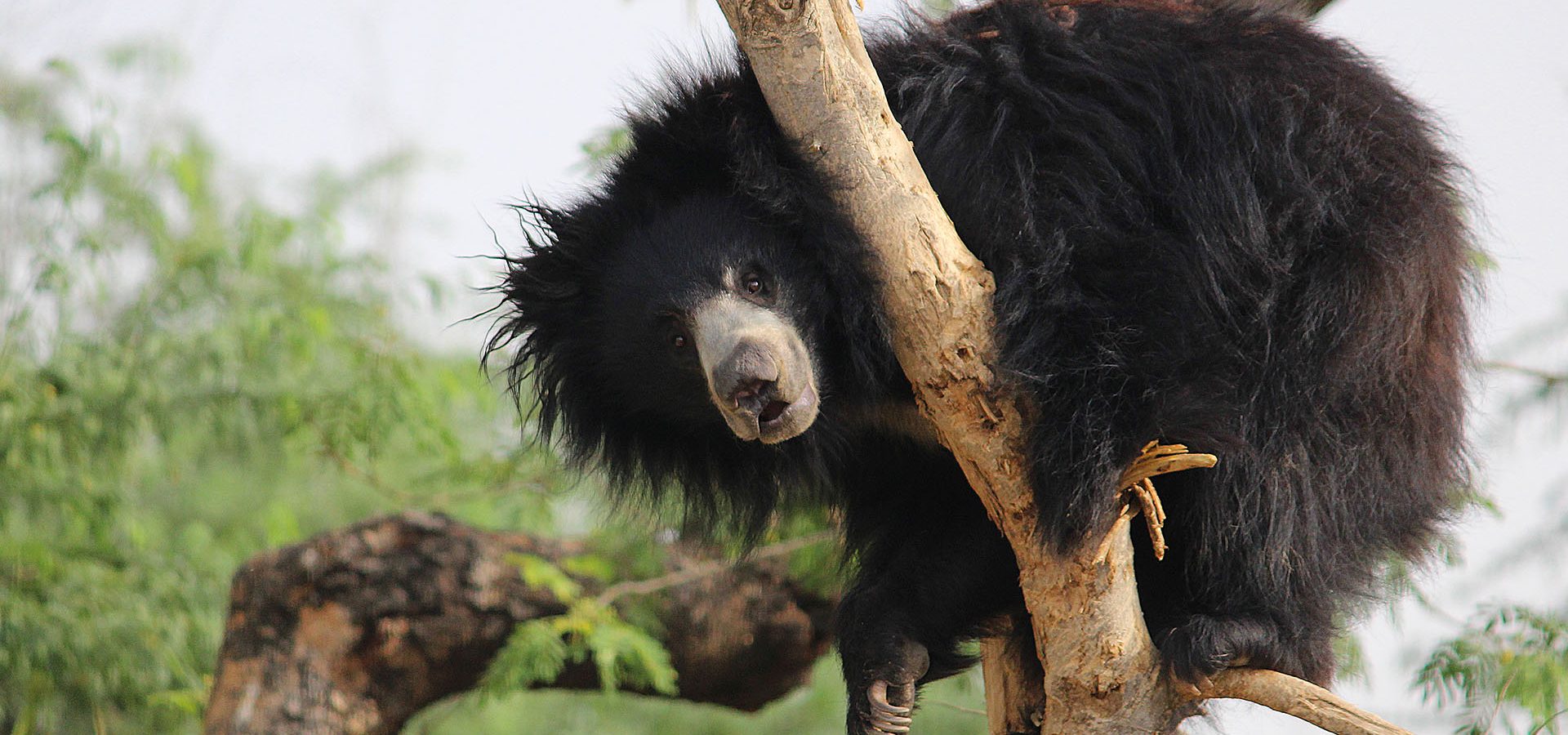It is estimated that more than half of the sloth bears found in India are outside of well-protected areas. They are able to persist in degraded habitats due to several specialized characteristics they possess. First, sloth bears are myrmecophagous, meaning they eat termites and ants. In fact, approximately half of their diet consists of termites or ants. Since termites and ants thrive in small patches of disturbed habitat, sloth bears often have a reliable food source, even in the midst of degraded habitats. Secondly, and likely related to them being myrmecophagous, sloth bears have a small home range for a bear. For example, the home range of a female sloth bear has been estimated at 9.4 km2 in Nepal and 12.4 km2 in central India, and that of a male sloth bear at 14 km2 in Nepal. Compare this to a brown bear (Ursus arctos) whose home range may exceed 1,000 km2. Because sloth bears have small and often overlapping home ranges, viable populations are able to persist in a relatively small area for a bear species. Thirdly, sloth bears, including adult males and females with dependent young, are socially tolerant of one another, which may allow for more bears to occupy a smaller area if there are enough resources. Lastly, sloth bears are largely nocturnal, which is beneficial in avoiding direct contact with humans. However, none of these attributes are exceptionally useful in avoiding anthropogenic risks.
Anthropogenic risks are threats caused by human action or inaction. In the Indian state of Karnataka, the main anthropogenic risks to sloth bears include snares, home-made explosive devices, open wells and roads. When Wildlife SOS is called out to help an injured sloth bear in the state of Karnataka it is usually due to one of these issues. From 2006-2007 and 2013 -2019, Wildlife SOS was called to help with 20 bear snare incidents, 8 crude explosive devices incidents, 7 roadway incidents and 5 open well incidents.

Snares are generally set for bush meat as food, the primary targets being wild boar (Sus scrofa) and Indian hare (Lepus nigricollis). Sloth bears are not killed for food, nor are they highly valued for their body parts in India. Thus, they appear to be unintentional victims of snares. Of the 20 wild sloth bears caught in snares that Wildlife SOS attempted to rescue, 12 were eventually released back to the forest where they had initially fallen victim to the snares. Four bears died in snares, or from the wounds they suffered, and 4 bears were put into lifetime care at the Wildlife SOS, Bannerghatta Bear Rescue Centre, because their injuries were too debilitating to release them back into the wild.

Crude explosive devices are made from mining supplies and are generally hidden within a food item, usually corn or fruit that is enticing to herbivores or omnivores. They are generally put out during the night, and picked up in the morning before cattle or humans might be injured. Using crude explosive devices to poach wildlife is a crime in India that carries a very stiff penalty. Nevertheless, they are used in southern India, but do not appear to be used with regularity throughout central or northern India. Sloth bears are not the target of these explosives but unfortunately these devices are indiscriminate killers. Eight bears were found dead during our survey from these explosive devices.

There are an estimated 8.7 million open wells scattered across the Indian subcontinent. An open well is a hole dug far enough to reach the water table and is most common in rural areas. Villages may have as many as 200 wells. Open wells range in size from 2 m to 20 m in diameter and 1 m to 70 m in depth. Many of these wells are currently in use, but a large number have been abandoned due to a lack of water or saltwater intrusion. Consequently, these wells represent an imminent threat to Indian wildlife, as they are frequently without barrier walls to prevent animals from falling in; nor do they provide any form of escape for animals that do fall. A wide variety of organisms have been rescued from these wells, including humans, domestic dogs, sheep and cattle, elephants, tigers, lions, leopards, sloth bears, snakes, and a myriad of other fauna. Wildlife that fall into dry wells are often killed instantly or suffer lingering deaths if not rescued. Those falling into water-filled wells and not rescued will drown and suffer a painful death, in turn polluting village water supplies.
Two of 5 bears, not including cubs, died from injuries sustained from a fall into a well or from being unable to escape the well. Both were females and 1 had 2 cubs that survived the fall and were rescued by Wildlife SOS. The cubs presently reside at the Bannerghatta Bear Rescue Centre. The 3 other bears, 2 females and a male, were rescued by Wildlife SOS and eventually released back to the wild.
Like most wildlife, sloth bears occasionally become victims to vehicle collisions. Being black in color and predominantly nocturnal makes them difficult to notice when crossing a road, even though traffic is less busy at night in these areas. The fact that 4 of the 7 roadkill situations involved a mother with cubs could potentially mean that the mother was moving more slowly while crossing the road while carrying cubs on her back. In the area where 3 sloth bears were killed within 400 m, the Forest Department and the Road Department are planning to build an underpass for wildlife to allow safe passage. Seven bears, not including cubs, died from vehicle collisions.
The findings of this study are being published in the peer-reviewed journal Ursus. We encourage those who wish to learn more to read the article in its entirety. Our purpose in studying these risks is to bring the risks to light in a scientific setting so that the risks can be mitigated. Wildlife SOS is presently working with the Forest Department to find ways to minimize the risks that these bears face while living in the shadow of humans.





